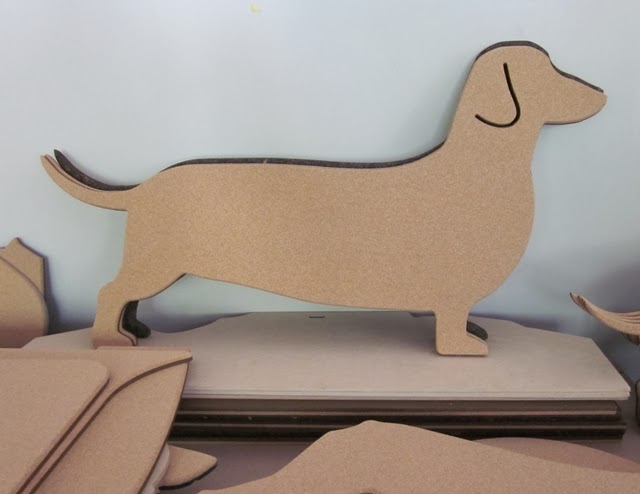I did try stabbing pins into my ironing board to stretch out and hold my damp linen but the pins didn't go in properly or stay in very well once I started stretching out the fabric. In the end I simply steam ironed the work face down on a thickly folded towel, pulling at various points as I went. Not too good either because the towel left little rough marks pressed into the linen and if I pressed down too hard the threads, especially the numbers 8 and 5 perle cotton, would flatten out and look squashed and sad. The thing to use seemed to be a cork board and damp stretching. I did look for a board from time to time but they have been a little hard to find.
For some time I have been reading Karen Ruane's stitching blog and besides the beautiful photographs of her work I was fascinated by how pristine and crisp the embroidered pieces always look once they have been damp stretched. Karen kindly sent me the link to a post on how she does the stretching and you will find it here. She uses a cork board.
After some more determined searching (what did we do without Google?!) I found cork boards made by Andrew Lundin at Get Cork here in Cape Town. Andrew was extremely helpful in making sure I got what I wanted, advised me on what type of cork may be suitable, kept in touch with me about the progress of the shipment of cork he was awaiting, and finally the making of the board. You can have a board made to size and if you are looking for an unusually shaped cork board this is where you will find one. I couldn't resist snapping this one in Andrew's workshop.
With my board safely home I did a test stretching with a white handkerchief just to see how it went. The damp cotton picked up very slight pale orange marks in 2 places in the centre, and where the pins pierced the fabric a ring of colour about 5mm in diameter also appeared around each pin. (Sorry I didn't take any pics). Further advice from Karen was that some cork does seem to give off colour and that sealing the cork works well.
My dear husband took on the task of the sealing and 5 coats later, though the instructions recommended only 3, I have a very nice sealed cork board to use.
This is the sampler I want to stretch. Its pulled thread work and the linen has become quite distorted between some of the rows of pulled thread squares. The question is: Was my tension far too tight - I do tend to work tightly - or will the wrinkles stretch out?
I'll take some pics as I go and put them up on my next post. Till then happy stitching!




oh yes, the wrinkles will definitely stretch out and I can't wait to hear how it all turns out.
ReplyDeletehttp://karenannruane.typepad.com/karen_ruane/
Hi Karen. Thanks for stopping by. I hope to have my next post up soon. We have been getting our lounge/dining room ready for the builders who are coming tomorrow to chop the plaster off a wall and fix the damp problems. I'm not looking forward to all the dust, as you will understand!
DeleteA really useful post, Lyn. We recently had a very large Italian tile set into cork board in order to use as a trivet. It wasn't easy to organise, but our local framer eventually did it. He had trouble getting cork or any thickness. I have a softwood chopping board I can stick pins into to block small things but will now explore the cork further. Many thanks.
ReplyDeleteHi Jillian. A lot of cork comes from Portugal and I remember that the cork oaks had a serious disease some years ago that affected the cork industry. The Cape being a wine making region we soon became aware that some wine bottles no longer had cork stoppers, but were sporting twist off metal lids! Perhaps its as a result of those cork shortages that we still struggle to find cork products these days?
Delete